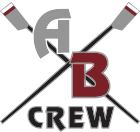For Coxswains
Does the following describe you?
- You want to learn the strategy behind great rowing
- You want to encourage your teammates them to do their best
- You want your team to go FAST!
If this sounds like you, then you might be a coxswain! What's a coxswain? First of all, it's pronounced "cox-in," or just "cox," for short. Coxswains don't row in the boat, but they do everything else! They steer, tell the rowers what to do, help the coach run drills and practices, and provide very important motivation during races. Coxswains can be a very important factor in how fast a boat goes!
Want to learn more? Read on, join the team, and then express your interest in coxing to the coaches. Please note that while you're welcome to speak to the coaches if you're interested in coxing, the coaches will ultimately make the decision about who is best suited to cox.
The Role of the Coxswain Explained
Spypond Traffic Pattern

FAQs for Coxswains
Safety
Safety is incredibly important to the sport of rowing. Coxswains are the greatest of multi-taskers, because you're steering, correcting technique, calling out commands, watching other boat traffic, and listening to your coach - all at once! It takes a lot of practice to do all these things at once, so it's important in the beginning to focus on safety above all other tasks. While all rowers must be comfortable with safety procedures in and around rowing shells, coxswains must have this information memorized and be ready to recall it at a moment's notice. If you need help learning this information, watch the US Rowing Safety Video here!
How do I steer?
Crew boats have a skeg and a rudder, located together under the stern of the boat. The skeg, a large flat fin, helps stabilize the boat. The rudder is smaller, and that's what the coxswain uses to steer the boat. Rudders are attached by a pin through the stern of the boat to cables or thin ropes on the top of the stern deck. These steering cables run around and in front of the coxswain's seat. To steer to port (left), pull the cord on your right towards you. To steer to starboard (right), pull the cord on you left towards you. When you steer, it'll take a few strokes for your actions to take effect, so be patient and plan in advance! You should also try to minimize your steering, and keep the rudder straight as much as possible, because this will help the boat stay balanced. When you steer, try to pick a fixed point on the shore of the river and steer directly towards it. Finally, if you're practicing with other boat(s), make sure you communicate with the other coxswain(s) so you know you're not on a collision course!
What do I say?
It takes a lot of practice to learn what you should - and shouldn't - say to your boat. In the beginning, a new coxswain should concentrate on safety of the boat, steering, and listening to the coach and communicating her information to the rowers. After you get comfortable with these things, you can start to spend more time on motivating your rowers to try their hardest. To do this, get to know your rowers and find out what motivates them. And in races, tell them where the competition is. Remember that the rowers aren't allowed to look out of the boat - so they're relying on you to tell them how they're doing against their competition. In general, no matter what you're saying, make sure you're speaking clearly and loudly so that everyone can understand what you're saying. You will be using a "Cox-Box" in the boat, which is a speaker system that allows rowers to hear what the coxswain is saying.
Does it matter how tall I am?
No, your height as a coxswain doesn't matter, be aware that coxswain seats are small spaces.
Communicating with your coach
Your coach can generally communicate with you easily, because they will usually have a megaphone. On the other hand, unless the coach's launch is near you, it's usually difficult to say anything in return. To deal with this, it's become commonly accepted across many crew teams and coaches for coxswains to raise one hand if they hear and understand their coach's instructions. This form of communication is also useful at races for indicating to race officials and referees that you understand their instructions.
Why are some coxswains in the stern of the boat and others in the bow?
In all 8+s and in some 4+s, coxswains sit in the stern of the boat, facing their rowers. The upside of stern-coxed boats are that coxswains can see what their rowers are doing and help the coach correct the rowers' technique. The downside is that you're trying to steer and it can be very difficult because you can't see straight in front of you as your rowers are in your way. To make up for not being able to see in front of you, you'll need to constantly be aware of other traffic around you and where that traffic is at all times. In some 4+s, coxswains lie down in the front (bow) of the boat. This is good for the coxswain because they can see in front of the boat much more easily, but it's bad because they can't see the rowers to help them with their technique, which is why bow-coxed boats are usually only used for very experienced rowers and coxswains.
Learn more about coxing:
COXSWAINation - site by Yaz Farooq, former U.S. Women's National Team coxswain
Believers in the Stern - articles about coxing from Row2k
The 9th Seat - info and advice from Mary Whipple, coxswain of the women's Olympic gold medal 8+
